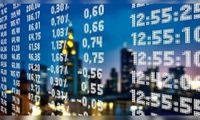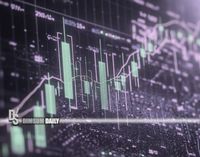On Monday, April 7, 2025, Asian markets opened the week with a dramatic downturn, primarily driven by escalating tensions in the US-China trade war. The Hong Kong and Chinese stock exchanges reacted sharply after Beijing announced a staggering 34% tariff on all imports from the United States, following President Donald Trump’s recent tariff hikes. This move has not only rattled investor confidence in the region but has also raised fears of a potential global recession.
The Hong Kong and Mainland China markets had been closed for the Ching Ming Festival on Friday, April 4, 2025. Upon reopening, the Hang Seng Index tumbled by 10.21% by 9:52 AM local time, reflecting widespread panic among investors. The Hang Seng Technologies Index faced an even steeper decline, plummeting by 12.11%. Major players in the technology sector were particularly hard hit, with Sunny Optical Technology Group dropping 17.16%, BYD Electronic International falling 16.85%, and Lenovo Group losing 16.58%. Tech giants Alibaba and Baidu also saw significant losses, trading down by 10.93% and 10.08%, respectively.
Meanwhile, the broader Chinese market mirrored these losses. The CSI 300 index fell by 5.42%, and the Shanghai Composite Index dropped by 5.48%. In response to these developments, Fitch Ratings downgraded China's credit rating from A+ to A, citing the tariffs' negative impact on economic growth. The agency forecasted GDP growth for China to be 4.4% in 2025, a decrease from 5.0% in 2024. "China faces mounting economic pressures due to the US tariffs, which could shave approximately 25 basis points off its GDP growth in 2025," noted a report by Kotak Securities.
Goldman Sachs Group Inc. also revised its outlook for Chinese equity indexes, lowering the MSCI China Index target from 85 to 81 and the CSI 300 Index outlook from 4,700 to 4,500. This pessimistic forecast comes amid a backdrop of heightened volatility across global markets.
In Japan, the Nikkei 225 index suffered a catastrophic drop of 2,188.74 points, or 6.48%, marking one of its steepest declines in years. The selling frenzy was widespread, with exporters and technology stocks bearing the brunt of the losses. The Shanghai Composite dropped by 5.28%, while the Shenzhen index plunged by 6.74%. This wave of investor panic has been fueled by fears of continued trade hostilities between the world's two largest economies.
The impact of the trade tensions was not limited to China and Japan. Other major markets across the Asia-Pacific region also experienced significant declines. South Korea's KOSPI fell by 4.49%, while the Hang Seng Index in Hong Kong recorded a massive 9.1% drop. Australia's ASX 200 shed 3.98%, contributing to the regional market slump. These declines underscore the interconnected nature of global markets, where geopolitical risks in one region can trigger widespread sell-offs.
On Wall Street, the fear was palpable as well. Last Friday, the S&P 500 posted its worst session since the COVID-19 crisis, dropping 6%, while the Dow Jones Industrial Average slid 5.5%, and the Nasdaq Composite tumbled 5.8%. Even a robust US jobs report failed to alleviate the anxiety surrounding the deepening trade dispute. Futures on Wall Street sank further on Sunday evening, with Dow Jones futures down over 1,500 points and S&P 500 futures down over 4%. Analysts warn that unless diplomatic ties between the US and China improve, the current situation could lead to a global recession.
In India, the stock market mirrored the bearish tone seen across global markets. Nifty futures signaled a steep drop ahead of the market open, with the Indian stock market crashing by 3.81% to 22,031. The Sensex opened significantly lower, dropping a massive 3,000 points to 72,292 as trading commenced.
The ramifications of these tariffs extend beyond immediate market reactions. Trump's announcement included a 25% tariff on automobiles and parts, along with a 26% reciprocal tariff on imports from India. These measures aim to protect domestic industries but have sparked fears of a trade war, leading to widespread market volatility. The tariffs have particularly affected sectors reliant on international supply chains, causing disruptions and increased costs for businesses.
As the situation unfolds, global responses vary. China has retaliated with its own tariffs and export restrictions, while European leaders, like President Macron, advocate for unity against protectionism. British Prime Minister Starmer seeks to shield domestic businesses and pursue trade deals, and Israeli Prime Minister Netanyahu is set to discuss the new tariffs with Trump directly. Japan is attempting to negotiate via telephone, facing a 24% levy, while Vietnam has agreed to trade talks after a 46% tariff announcement.
This turbulent environment highlights the far-reaching consequences of trade policies and the interconnected nature of modern economies. Investors and businesses alike are urged to stay vigilant as the landscape continues to shift amid ongoing global disruptions.








